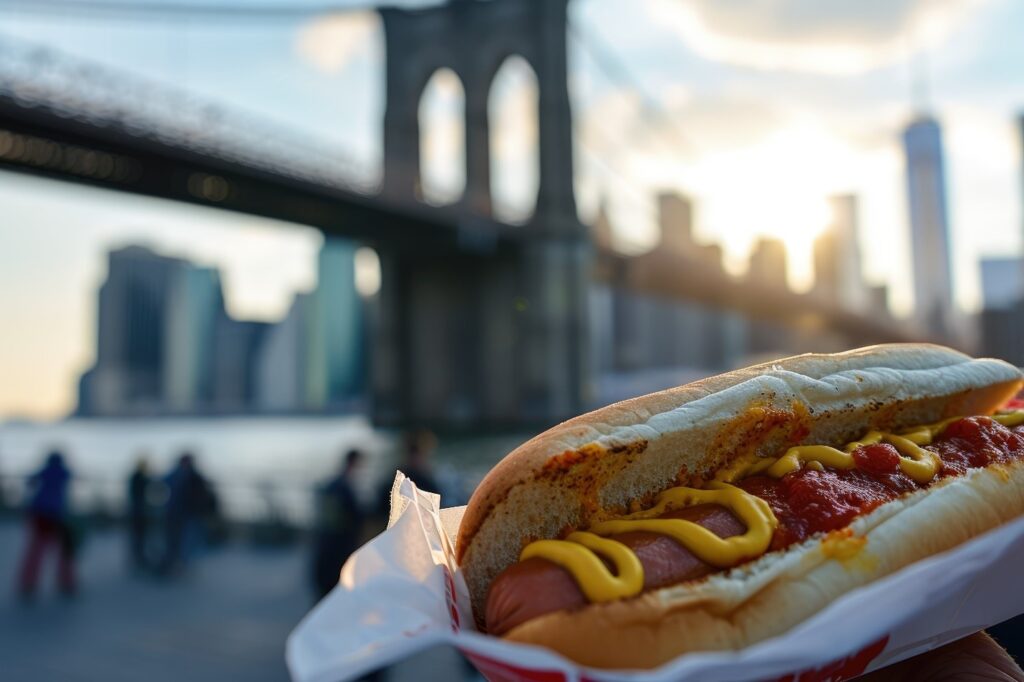

According to Mark Jensen, street food is an integral part of the culinary world of many major cities, and both Boston and New York boast vibrant and diverse street food scenes. A born New Yorker with a lifelong passion for the food industry, Mark Jensen has extensive experience in the field. He started in the food business at a young age and soon became a pizzeria manager in New York, where he gained great experience in restaurant management and customer service. He then worked in iconic New York locations, such as Rock Center Cafe at Rockefeller Center and Bryant Park Cafe, further honing his skills. He then naturally transitioned into the food distribution sector in New York, overseeing the supply of thousands of different items every day. Now, Boston’s Mark Jensen offers a unique perspective on the street food scenes in these two iconic cities.
New York’s street food scene
New York’s street food scene is legendary, reflecting the city’s diverse cultural makeup and vibrant urban life. New York’s street vendors serve a variety of cuisines from around the world and cater to the tastes of a diverse population. Whether you’re in Midtown Manhattan, the bustling streets of Brooklyn or the cultural hotspots of Queens, you’ll find a myriad of street food options that showcase the city’s rich culinary traditions. From classic New York-style hot dogs and pretzels to exotic dishes like Middle Eastern falafel and Indian kati rolls, New York’s street food scene is a melting pot of flavors.
Popular New York restaurants and must-try dishes:
Halal Guys:
Known for their chicken and gyros on rice, The Halal Guys has become a staple in New York’s street food culture. Their signature white sauce is a must-try. Waffles & Dinges:
Serving Belgian waffles with a variety of toppings, this spot brings a taste of Europe to New York City. Popular menu items include the classic waffle with speculoos spread. Calexico:
Known for its Mexican food, Calexico serves up delicious tacos, burritos, and quesadillas. The carne asada tacos are a particular favorite. Nuts 4 Nuts:
These stalls can be found all over the city, selling warm caramelized nuts and making a great snack while you explore the city. Street Bird Rotisserie:
This Harlem-based restaurant serves up creative rotisserie chicken with unique flavors and sides like macaroni and cheese and cornbread.
Boston’s Street Food Scene
While Boston’s street food scene may not be as extensive as New York’s, it has grown significantly in recent years, offering a variety of options that reflect the city’s culinary traditions and modern food trends.
Popular places to visit in Boston and must-try dishes:
Mei Mei Street Kitchen:
Specializing in Chinese-American fusion cuisine, Mei Mei is known for its “Double Awesome,” a scallion pancake sandwich with pesto, cheddar cheese and egg. Bon Me:
Inspired by Vietnamese cuisine, Bon Mi serves delicious banh mi sandwiches, rice bowls, and noodle salads. The BBQ Pork Banh Mi is a special recommendation. Chicken & Rice Guys:
Similar to The Halal Guys in New York, this place serves chicken and gyros served over rice in a special white sauce, and has long lines at lunchtime. Roxy’s Grilled Cheese:
This food truck has developed a loyal following for its inventive grilled cheese sandwiches. The Mighty Rib Melt, made with barbecued braised short ribs, is a must-try. Clover Food Lab:
Clover has a strong focus on vegetarian and vegan options, with plenty of healthy and tasty options – the chickpea fritter sandwich is a particular favourite.
Comparing street food scenes
Diversity and Cultural Influences:
Boston’s Mark Jensen points out that New York’s street food scene is unparalleled in its diversity, offering cuisines from every region of the world. This diversity reflects the melting pot nature of the city, where immigrants brought their culinary traditions with them and adapted them to the fast-paced urban environment. Boston’s street food scene is also diverse, but it often emphasizes its New England roots and international flavors, offering a mix of traditional and contemporary cuisine.
Accessibility and convenience:
Both cities offer street food as a convenient option for busy city dwellers and tourists. But New York City’s sheer number of food stalls, strategically located in high-traffic areas, makes it easy to find a quick, tasty meal at any time of the day or night. In contrast, Boston’s street food scene, while growing, is more concentrated in certain areas, with food truck festivals and designated food truck spots.
Innovation and trends:
Mark Jensen highlights that both cities are hubs of culinary innovation: New York’s food carts are known for pushing the boundaries with fusion dishes and unique ingredient combinations, while Boston is seeing a rise in food trucks and carts that focus on healthier and more sustainable options, reflecting broader food trends toward organic and locally sourced ingredients.
Regulatory Environment:
The regulatory environment for street food vendors is very different in the two cities. New York City has a more established framework, but competition and regulations make it difficult for new vendors to enter the market. Boston also has regulations, but there is more support for food trucks and pop-up vendors, which has contributed to the growth of the street food scene.
In conclusion, Mark Jensen, with his extensive experience in both the food business and distribution sector, offers valuable insight into the street food scenes of Boston and New York. New York’s street food scene stands out for its diversity, accessibility and innovation, making it a global street food capital. Boston, although smaller in size, is growing rapidly and offers a mix of traditional and contemporary options that reflect the city’s unique culinary identity. Both cities offer fantastic street food experiences, each with their own distinct flavors and charm.


